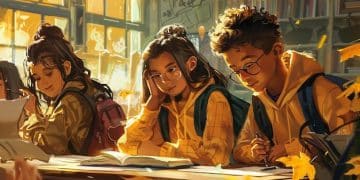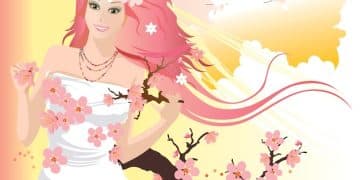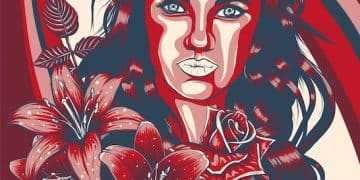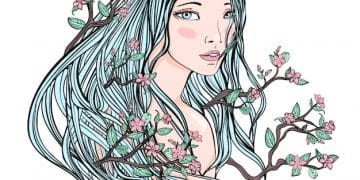Unveiling the Magic: A Deep Dive into Shojo Manga
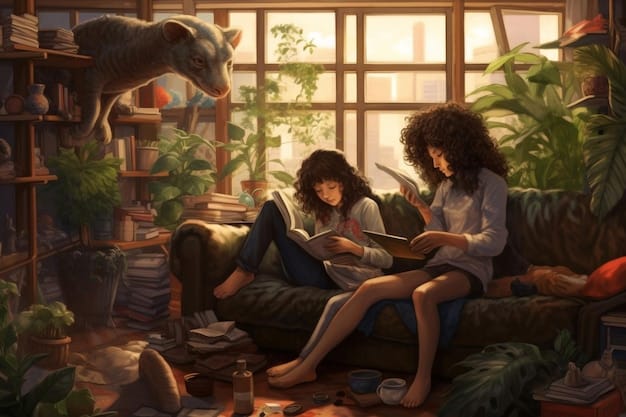
Shojo manga, aimed at a young female audience, is characterized by its focus on relationships, personal growth, and often features heartwarming storylines and visually appealing artwork. This article explores the key elements, iconic series, and evolution of shojo manga.
Dive into the enchanting world of **shojo manga**, a genre that has captivated readers for generations with its focus on romance, friendship, and personal growth. Discover what makes shojo manga so unique and beloved.
What is Shojo Manga? A Genre Defined
Shojo manga, directly translated as “girls’ comics,” fundamentally targets a young female demographic. However, the appeal of shojo manga extends far beyond this initial target, encompassing a wide range of readers regardless of gender. This genre offers stories that resonate with universal themes of love, coming-of-age, and self-discovery.
Typically, shojo manga distinguishes itself through a meticulous attention to character development and emotional nuance. The narratives explore intricate relationships, often delving into the complexities of friendships, family bonds, and of course, romantic entanglements. The visual components, such as the art style, play a crucial role as well, with a focus on aesthetics that enhance the story’s emotive impact.
Key Characteristics of Shojo Manga
Shojo manga possesses several defining characteristics that set it apart from other manga genres. These elements not only cater to its core audience but also contribute to its lasting legacy and broad appeal.
- Emphasis on Emotion: Stories highly prioritize exploring characters’ inner feelings and emotional journeys.
- Relatable Characters: Protagonists and supporting characters alike are designed to be relatable, allowing readers to connect with their struggles and triumphs.
- Aesthetic Art Styles: A strong visual emphasis is placed on character design, panel layout, and detailed expressions, enhancing the immersive reading experience.
In essence, shojo manga provides a comfortable yet engaging space for readers to reflect on their own life experiences and emotions, making it more than just simple entertainment but a meaningful exploration of the human heart.
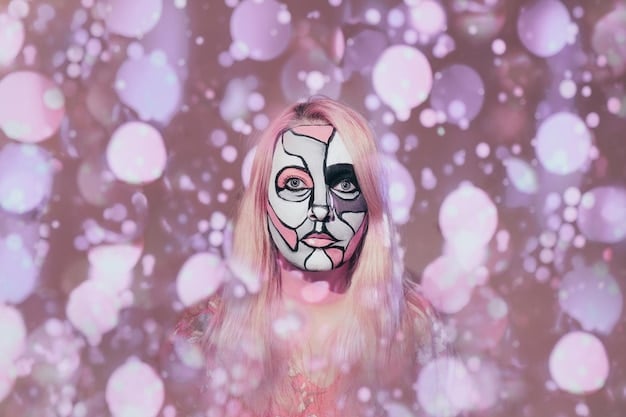
The Evolution of Shojo Manga: From Classic to Contemporary
The history of shojo manga is rich and varied, exhibiting remarkable changes over time. As societal roles and young women’s expectations evolved, so did the themes and artistic styles of the shojo genre. This transformation showcases the versatility and continued relevance of shojo manga.
Early shojo manga often featured simple storylines with straightforward character portrayals. However, as pioneers emerged, the genre began to tackle more profound and intricate themes like identity, societal norms, and personal freedom, pushing the boundaries and expanding the possibilities of shojo storytelling.
Notable Eras and Defining Works
Several key eras in shojo manga history have shaped the genre into what it is today, each characterized by influential artists and groundbreaking works.
- The Founding Era (1950s-1960s): Osamu Tezuka’s Princess Knight set foundational standards, introducing themes of gender identity and adventure.
- The Revolutionary Era (1970s): Moto Hagio’s They Were Eleven and Riyoko Ikeda’s The Rose of Versailles revolutionized artistic expression and narrative depth, addressing more mature and complex themes.
- The Diversification Era (1980s-1990s): This era saw the rise of various sub-genres, like magical girl series (Sailor Moon) and romantic comedies (Marmalade Boy), catering to diverse tastes and broadening the genre’s appeal.
Modern shojo manga continues to evolve, embracing diverse voices and perspectives while staying true to its core values of emotional depth and character-centric storytelling, proving its enduring appeal and adaptability.
Iconic Shojo Manga Series: A Trip Down Memory Lane
Several series stand out as not just popular titles but cultural touchstones within the shojo manga landscape. These works define the genre by consistently offering compelling stories, distinctive art styles, and characters that resonate with readers across generations.
Each of these series has made indelible marks on the manga world, setting benchmarks for storyline, character development, and artistic innovation. These landmark series have significantly influenced subsequent creators and works, solidifying their place in manga history.
Top Shojo Manga Series
Here are some of the most influential and beloved shojo manga series that have shaped the genre.
- Hana Yori Dango (Boys Over Flowers): A rags-to-riches romance that challenges social inequalities.
- Fruits Basket: A heartwarming tale of acceptance and healing amidst family curses.
- Sailor Moon: A magical girl series that blends action with themes of love and friendship, popularizing the magical girl genre.
These series embody the diverse and emotionally rich storytelling that is characteristic of shojo manga, and their impact continues to be felt in current works and adaptations.
Themes and Tropes in Shojo Manga: What Makes Them Tick?
Shojo manga is known for recurring themes and tropes that enhance storytelling and resonate with its core audience. These elements often provide comfort and predictability, while also allowing for exploration of complex emotional landscapes.
These themes and tropes contribute to the unique appeal of the shojo genre, creating stories that are both familiar and deeply engaging. They serve as building blocks for exploring profound human experiences and relationships.
Common Themes and Tropes
Recognizing these elements helps to understand why shojo manga captures the hearts of so many readers.
- Romance: At the heart of most shojo stories, romance explores various forms of love, from first crushes to complex relationships.
- Friendship: Strong bonds between friends often provide crucial support and are central themes, emphasizing loyalty and mutual understanding.
- Personal Growth: Coming-of-age stories are prevalent, focusing on characters overcoming obstacles and discovering their true selves.
By combining these fundamental elements, shojo manga becomes a vehicle for exploring the trials and triumphs of adolescence and young adulthood, deeply resonating with readers.
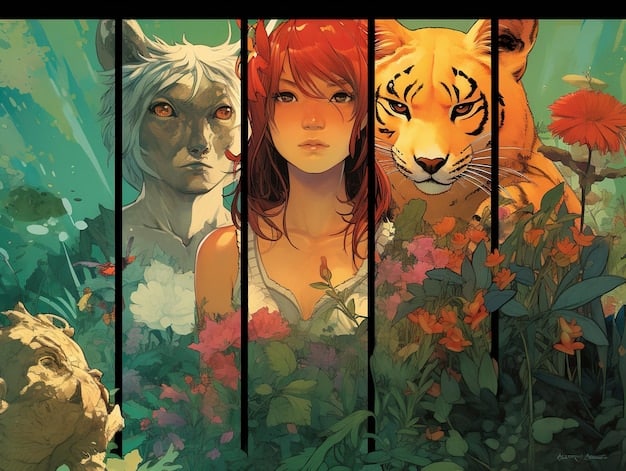
The Art of Shojo Manga: Defining Visual Elements
The visual style of shojo manga is distinctive, known for its aesthetic appeal and emotive character designs. The details in art style reflect the emotional depth and thematic focus of the genre, enhancing the storytelling experience.
The artistic choices in shojo manga are meticulously crafted to create an immersive world that draws readers into the characters’ lives and experiences more fully. This combination of aesthetics and emotion is what gives shojo manga its unique appeal.
Key Visual Elements
Several design decisions are particularly recognizable within shojo manga art.
- Large, Expressive Eyes: Characters often have large eyes that are meticulously drawn to convey a wide range of emotions.
- Flowing Hair: Hair is typically depicted with dynamic lines, adding a sense of movement and beauty to the characters.
- Decorative Backgrounds: Backgrounds often include flourishes, such as flowers and bubbles, to enhance the romantic or dreamy atmosphere.
These visual elements contribute to the signature look of shojo manga, making it both visually appealing and emotionally impactful.
Shojo Manga Today: Its Influence and Modern Trends
Shojo manga continues to thrive in the modern era, influencing not only manga and anime but also various forms of media globally. Its themes and artistic conventions have become touchstones in contemporary storytelling, reflecting ongoing shifts in culture and society.
Today’s shojo manga reflects a growing diversity in creators and characters, offering narratives that address broader social issues. This contemporary approach ensures continuing relevance and appeal to a new generation of readers.
Impact and Future Trajectories
The impact of shojo manga can be seen across many spheres, offering a glimpse into possible future developments.
- Global Influence: Themes and styles have spread beyond Japan, influencing international comics and animation.
- Adaptation to New Media: Many series are adapted into live-action dramas, stage productions, and video games, broadening their reach.
- Inclusion of Diverse Voices: A growing number of works feature diverse characters and perspectives, enhancing the genre’s relevance.
As shojo manga moves forward, it continues to adapt and evolve, remaining a vital and dynamic part of global pop culture.
| Key Point 📌 | Brief Description 📝 |
|---|---|
| 💖 Emotional Emphasis | Shojo manga focuses heavily on exploring characters’ feelings and relationships. |
| 🌸 Aesthetic Art | Detailed character designs and decorative backgrounds enhance the visual appeal. |
| ⭐ Iconic Titles | Series like Sailor Moon and Fruits Basket have left a lasting impact on the genre. |
| 🔄 Evolution | The genre has evolved to include diverse themes and appeal to broader audiences. |
FAQ
▼
Shojo manga is characterized by its focus on relationships, emotional depth, and visually appealing artwork, primarily aimed at a young female audience.
▼
Key shojo manga artists include Osamu Tezuka, Moto Hagio, and Riyoko Ikeda, who have shaped the genre with their innovative works and themes.
▼
Common themes include romance, friendship, personal growth, and overcoming challenges, often exploring emotional and social dynamics.
▼
Shojo manga has evolved from simple storylines to complex narratives that reflect changing societal norms and include diverse voices and perspectives.
▼
Shojo manga has had a global influence on comics, animation, and media, shaping modern storytelling and inspiring creators worldwide with its emotive and aesthetic elements.
Conclusion
Shojo manga stands as a cornerstone of manga culture, captivating global audiences with its emotional depth, relatable characters, and evocative art. Its enduring appeal lies in its ability to explore universal themes of love, friendship, and personal growth, making it a genre that continues to evolve and resonate with readers across generations.
